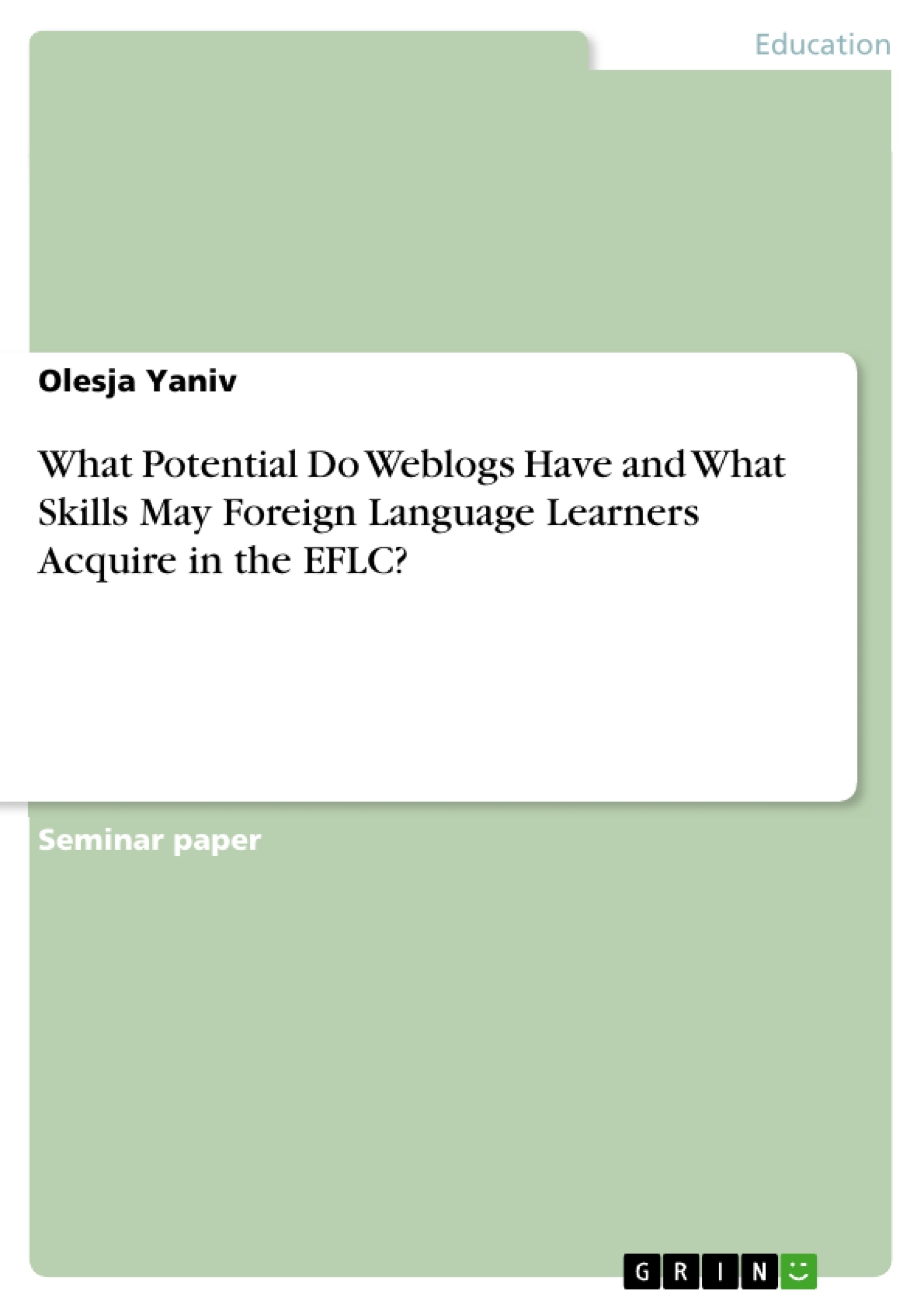In this term paper I am going to describe the expansion of digital media and why digital media are suitable for learning and teaching in the foreign language classroom in general. Afterwards I am going to specify this extensive subject of digital media and to focus on weblogs; I am going to define and examine weblogs concerning their potential and skills that the foreign language learners may acquire by using this kind of communication platform. Finally, I am going to implement these competencies into practice and introduce a teaching unit which I created with my fellow students within the seminar “Digital Media in the EFLC” at Justus-Liebig-University. This teaching unit focusses on countering stereotypical thinking by using weblogs. Thus, it is necessary to examine why weblogs can be a helpful tool to confront foreign language learners with stereotypical thinking.
Over the past decades, the personal computer has become an integral part of modern life in Western society and has entered various sectors of life. Even the rise of the internet and online communication technologies has undoubtedly impacted the way people work and communicate and has become an essential tool for improving the learning process in various fields. Furthermore, Web 2.0 applications such as weblogs are rapidly achieving mainstream adoption in our media culture and have become source of information and reference.
Inhaltsverzeichnis (Table of Contents)
- Introduction
- Why Teaching with Digital Media in the Foreign Language Classroom?
- Why Teaching with Weblogs?
- A General Overview of the Features of Weblogs
- Skills That Foreign Language Learners May Acquire by Using Weblogs
- Communicative Skills
- Text Competence and Media Literacy
- Language Awareness
- Cultural Awareness through Weblogs
- Practical Implementation
- Presentation of the Weblog „My Life as a Canadian”
- Stereotypes as the Main Topic of This Teaching Unit
- A Teaching Unit with the Weblog „My Life as a Canadian”
- First Teaching Unit
- Second Teaching Lesson
- Learning Targets
- Conclusion
Zielsetzung und Themenschwerpunkte (Objectives and Key Themes)
This term paper explores the potential of weblogs as a digital media tool in foreign language teaching. The paper aims to demonstrate how weblogs can enhance language acquisition and foster intercultural learning in the classroom. It specifically examines the skills that foreign language learners can acquire through weblog use, focusing on communicative skills, text competence, language awareness, and cultural awareness.
- The role of digital media in foreign language acquisition
- The potential of weblogs for language learning and development
- Skills acquired through weblog use: communicative competence, text competence, language awareness, and cultural awareness
- Practical implementation of weblogs in a teaching unit focusing on countering stereotypes
- Intercultural learning and the role of digital media in fostering intercultural communication
Zusammenfassung der Kapitel (Chapter Summaries)
- Introduction: This chapter provides a broad overview of the significance of digital media in modern society and its impact on communication and learning processes. It highlights the increasing adoption of Web 2.0 applications like weblogs and their potential for foreign language acquisition. The chapter emphasizes the importance of intercultural learning and how weblogs can contribute to this by facilitating communication and challenging stereotypes.
- Why Teaching with Digital Media in the Foreign Language Classroom?: This chapter delves into the benefits of integrating digital media into foreign language teaching. It discusses how digital media can enhance student interaction, promote fluency, and provide opportunities for independent processing and knowledge exchange. The chapter emphasizes the importance of creating an interactive and authentic learning environment that fosters communication, collaboration, and the acquisition of new knowledge.
- Why Teaching with Weblogs?: This chapter examines the specific features of weblogs and their potential for language learning. It outlines how weblogs can promote communicative skills, text competence, language awareness, and cultural awareness. The chapter highlights how weblogs provide a platform for engaging in authentic communication, exploring cultural perspectives, and developing critical thinking skills.
- Practical Implementation: This chapter presents a real-world example of how weblogs can be integrated into a teaching unit. It showcases a specific weblog and discusses its potential to address stereotypes and promote intercultural understanding. The chapter provides details about the teaching unit, including the learning targets and specific activities designed to engage students with the weblog content.
Schlüsselwörter (Keywords)
This term paper examines the intersection of digital media, foreign language acquisition, and intercultural learning. It specifically focuses on the use of weblogs as a tool for enhancing language skills and fostering intercultural understanding. Key concepts explored include communicative skills, text competence, language awareness, cultural awareness, and the role of digital media in challenging stereotypes.
- Citar trabajo
- Olesja Yaniv (Autor), 2016, What Potential Do Weblogs Have and What Skills May Foreign Language Learners Acquire in the EFLC?, Múnich, GRIN Verlag, https://www.grin.com/document/354485



